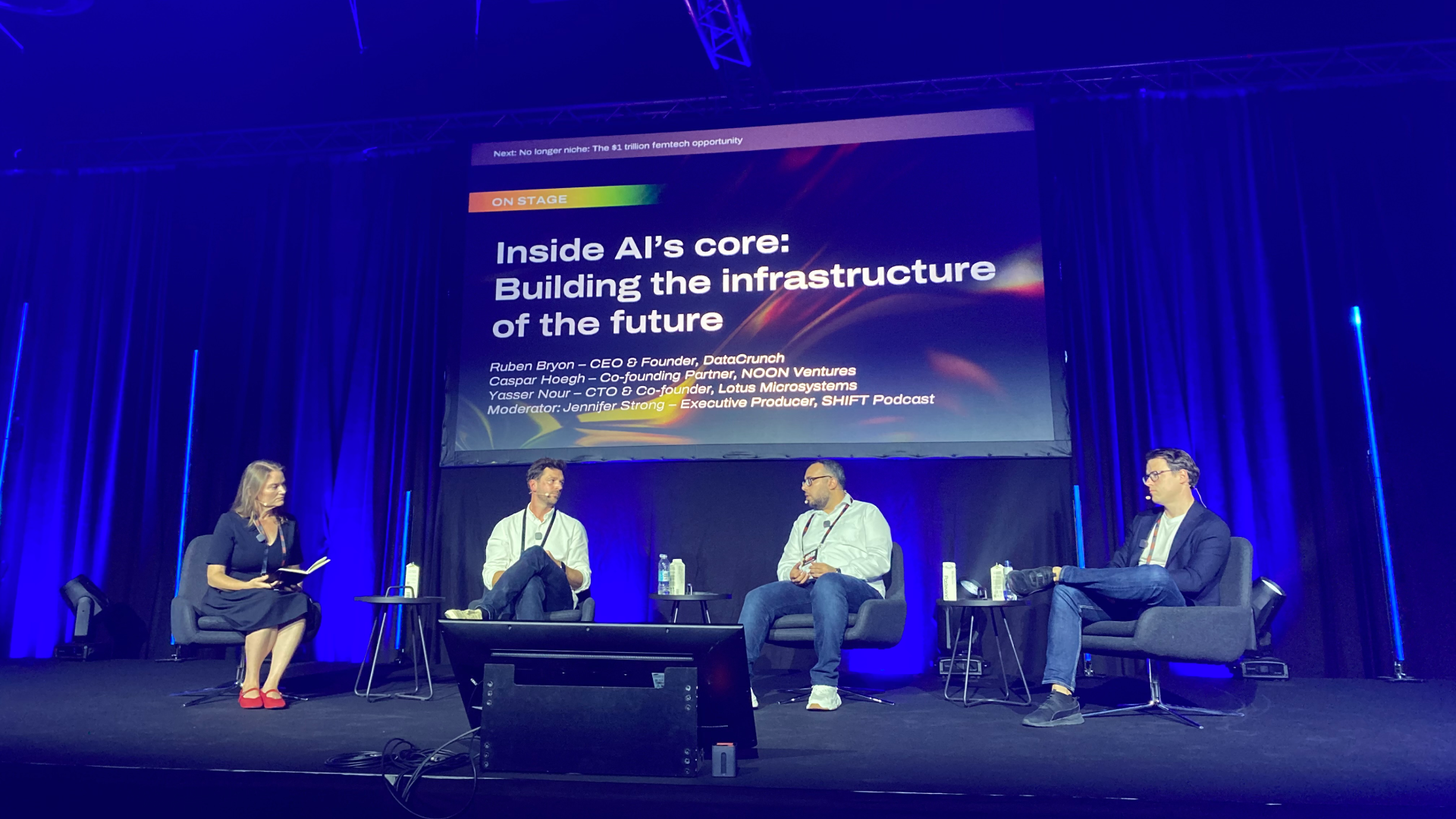Oct 7, 2025

Co-founder & CTO of Lotus Microsystems, Yasser Nour, joined the panel “Inside AI’s Core: Building the Infrastructure of the Future”, moderated by Jennifer Strong, Executive Producer of the SHIFT Podcast. Together with Caspar Høgh, Co-founding Partner of Noon Ventures, and Ruben Bryon, CEO & Co-founder of DataCrunch, they discussed:
As AI workloads expand, GPUs and CPUs demand increasingly more power, creating significant delivery bottlenecks. The key challenge is positioning power supplies as close to the chips as possible to reduce losses, mitigate hotspots, and enhance efficiency. Optimizing power delivery and designing more compact, efficient, and cost-effective power supplies is critical to support next-generation AI hardware.
Beyond conventional GPUs and CPUs, specialized chipsets such as TPUs and DPUs are essential to lower power consumption and boost computational throughput. Yasser highlighted that hardware development cycles often span four to five years, making investment challenging. Modern power supply designs are close to the limit of the current material limits, underscoring the need for continued research and strategic funding.
Sustainable semiconductor manufacturing is also a priority. Using environmentally conscious processes and conserving rare materials helps mitigate supply chain risks and reduce ecological negative impact. While geopolitical concentration of critical materials poses challenges, current R&D focus on sustainability and resource efficiency remains limited.
Building a sustainable AI future will require radical hardware innovation, smarter infrastructure, and bold investment strategies.
This live panel took place on August 27, 2025, at the TechBBQ event held in Bella Center, Copenhagen. TechBBQ is a major international summit, attracting attendees from around the world for two days of inspiration, networking, and growth.
The panel discussion was recorded and released as an episode of the SHIFT podcast, produced by Jennifer Strong and Emma Cillekens, mixed by Garret Lang, with original music by him and Jacob Gorski, and artwork by Meg Marco.
You can listen to the full episode here.